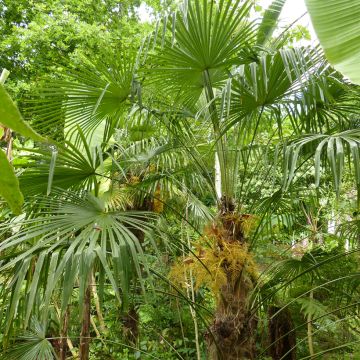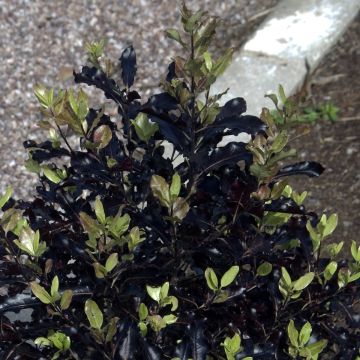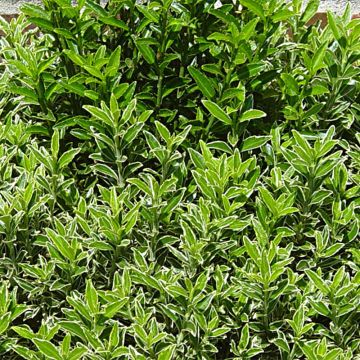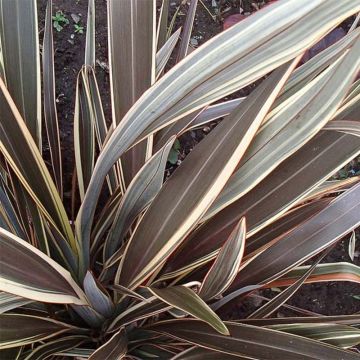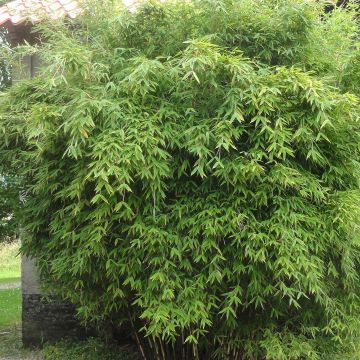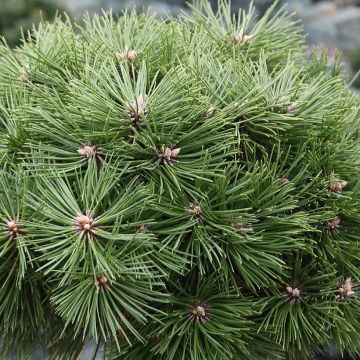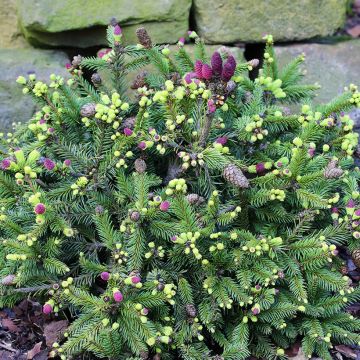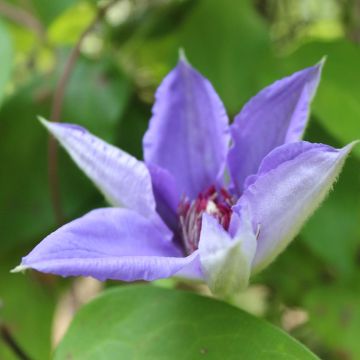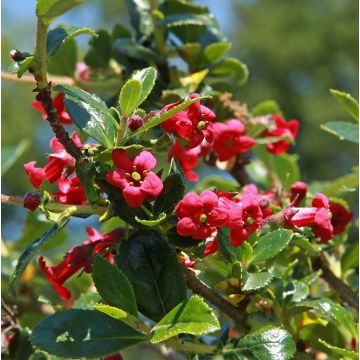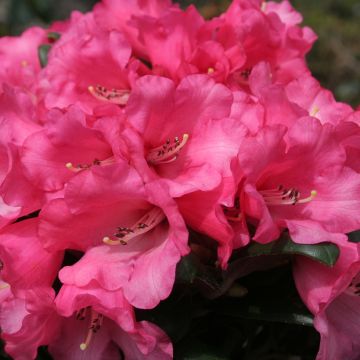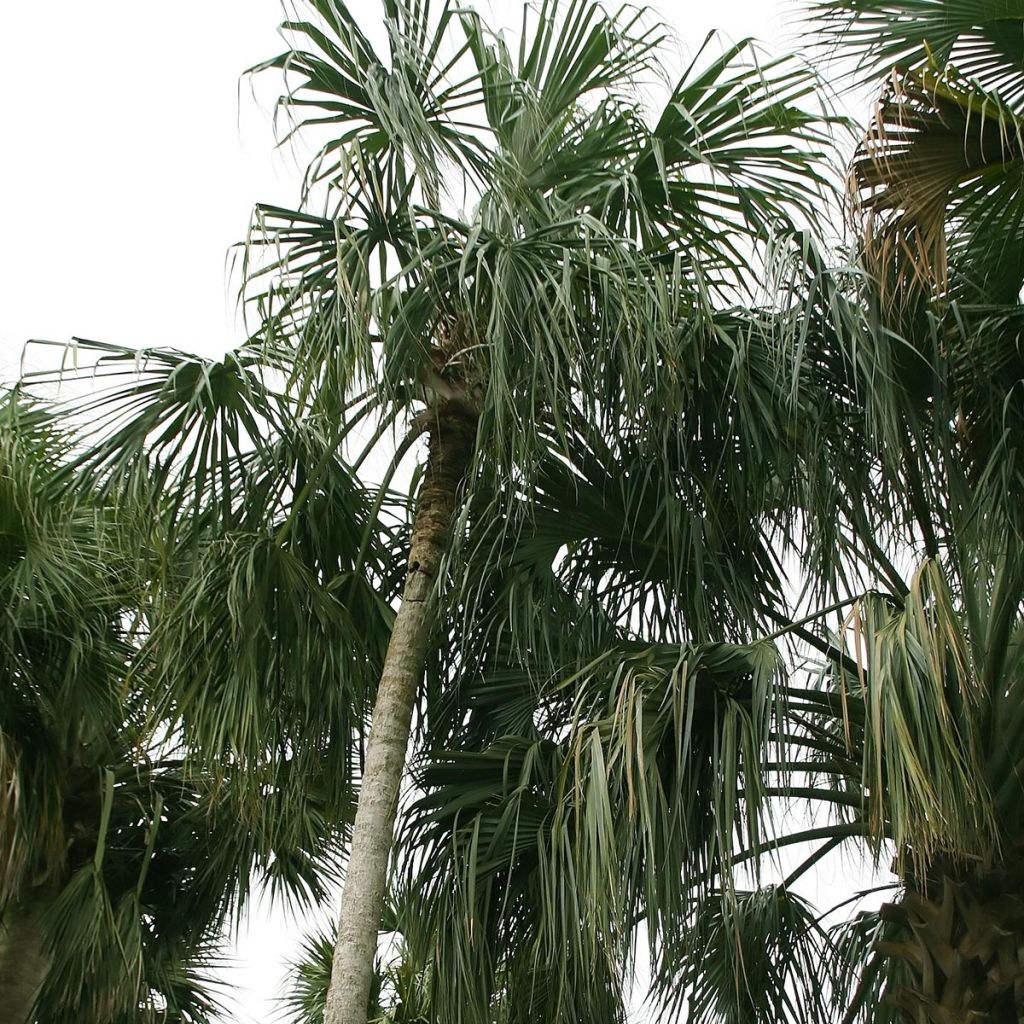

Sabal mauritiiformis - Palmier éventail
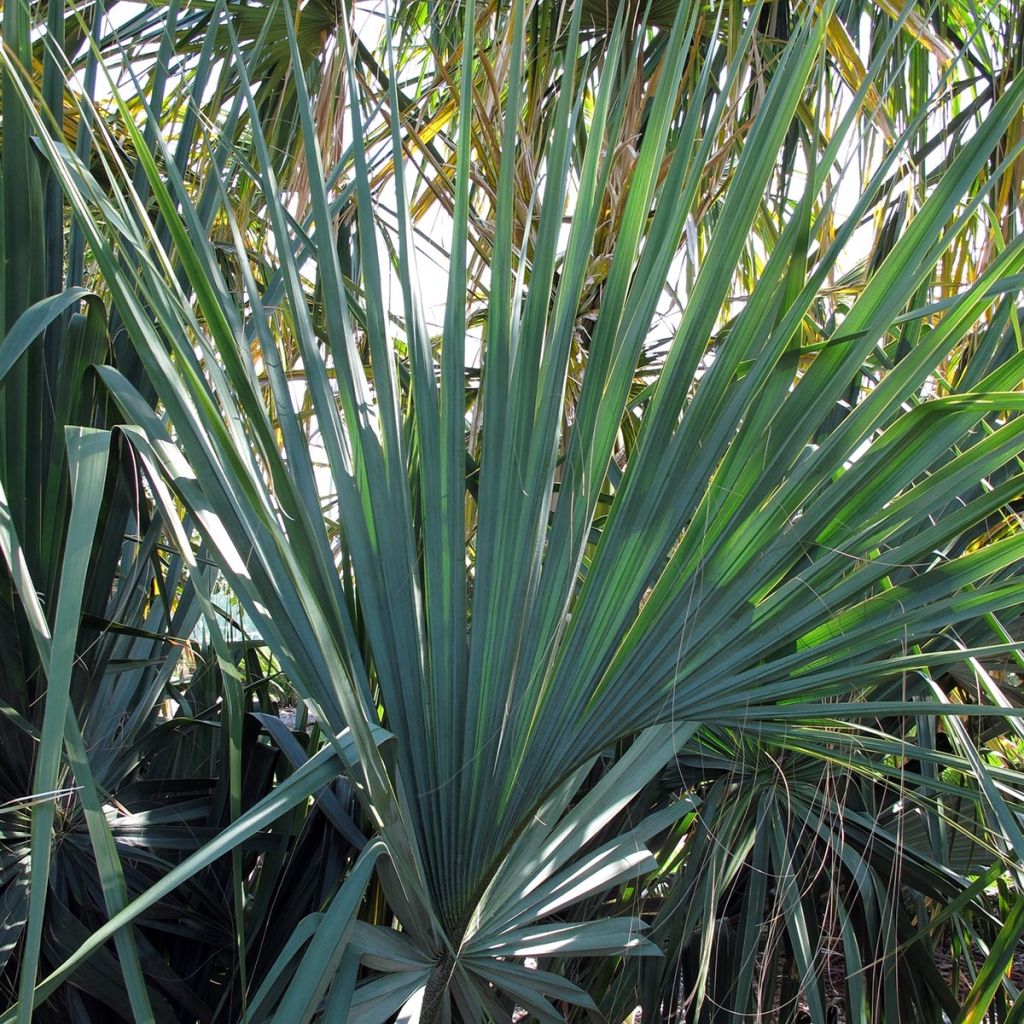

Sabal mauritiiformis - Palmier éventail
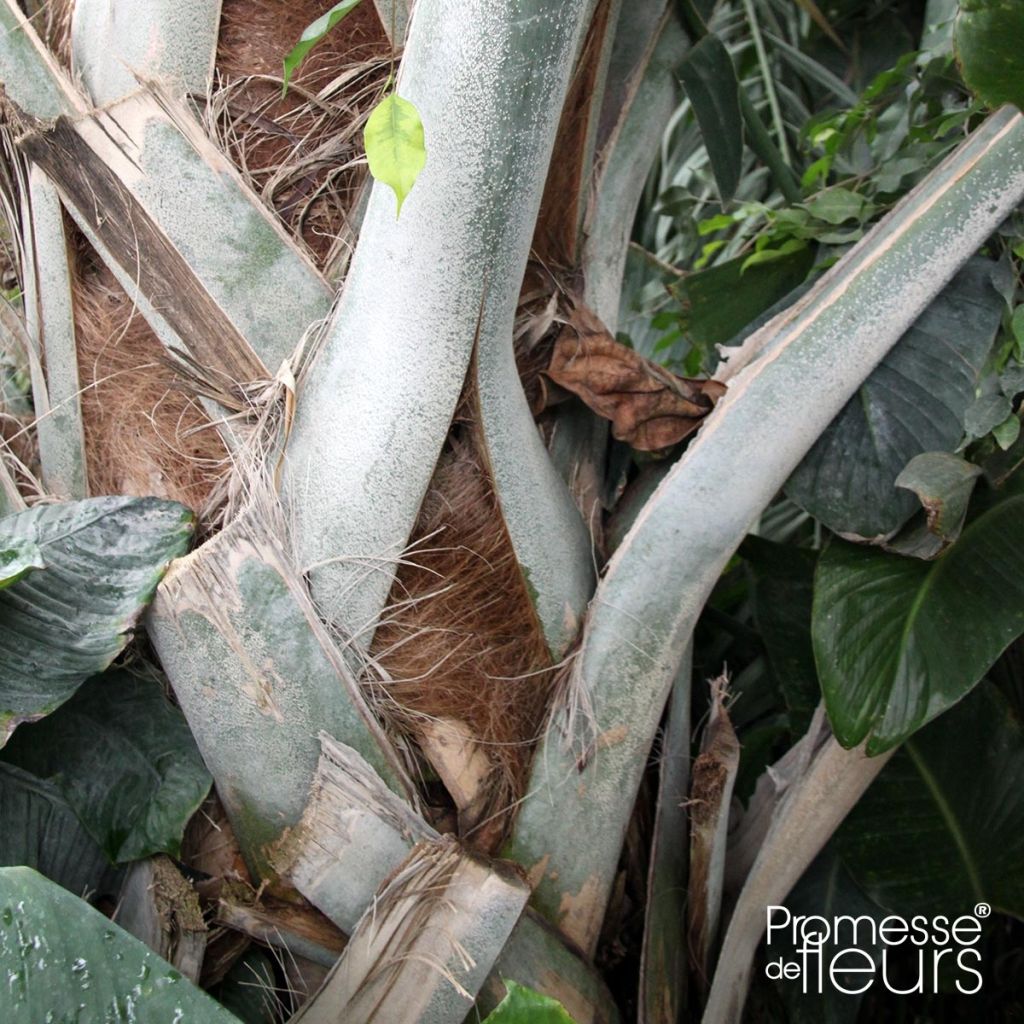

Sabal mauritiiformis - Palmier éventail
Sabal mauritiiformis - Trinidad Palm
Sabal mauritiiformis
Palma Amarga, Palma de Vaca, Trinidad Palm
This plant carries a 24 months recovery warranty
More information
We guarantee the quality of our plants for a full growing cycle, and will replace at our expense any plant that fails to recover under normal climatic and planting conditions.
From €5.90 for pickup delivery and €6.90 for home delivery
Express home delivery from €8.90.
Does this plant fit my garden?
Set up your Plantfit profile →
Description
The Sabal mauritiiformis is a spectacular palm tree, with a lush appearance, interesting for its rather rapid growth and its fairly accommodating nature. However, this magnificent tropical species is not very cold-resistant and can only be grown in the ground in areas with long hot summers and very mild winters. It is characterized by a thin false trunk topped by a large crown, composed of immensely palmate leaves that are deeply divided into rather thin and trailing segments. This sabal is a wonderful specimen for decorating a terrace or a greenhouse.
The Sabal mauritiiformis belongs to the family of Arecaceae. It is found in an area ranging from southern Mexico to Venezuela and Costa Rica where it is widespread in the undergrowth, disturbed areas and pastures, often in semi-shaded conditions. The plant can reach a height of 15 to 20m (50 to 66ft) in the wild, but it can be much shorter depending on the habitat. This species shows rapid growth if the conditions are met, it adapts to any type of loose, well-drained and deep soil that remains moist. An adult plant dies below -4 °C.
When young, the Sabal mauritiiformis forms a bush and after 10 to 12 years, it develops a single false trunk (stipe), cylindrical, straight and thin, very slender, measuring 15 to 20cm (6 to 8in) in diameter, greenish becoming browner, covered with remnants of old petioles. The foliage, ample and lush, is arranged in a terminal crown at the top of the stipe, and can eventually have a span of 9m (29ft). The crown is composed of 10 to 15 large costapalmate leaves, meaning palmate leaves arranged in a fan shape around a central axis. In the Sabal mauritiiformis, the petiole is particularly long. Each leaf, which can reach 1.50m (5ft) wide, is divided into 90 to 150 semi-rigid segments, with a trailing end. The indigenous people use them to protect their homes, for making hats or crafts. Flowering, which occurs on mature individuals, consists of ascending inflorescences between the leaves, branched, with cream-white bisexual flowers (both male and female), extending well beyond the leaves. The fruit is spherical or pear-shaped, measuring up to 1.1cm (1in) in diameter and turns black when ripe.
The Sabal mauritiiformis makes a magnificent specimen to grow in a container. Plant this magnificent species near an entrance, on a large terrace, near a swimming pool, or in a large tropical greenhouse. It can be grown in a large container for several years. The plant should be stored in a slightly heated and slightly humid greenhouse during winter.
Report an error about the product description
Sabal mauritiiformis - Trinidad Palm in pictures
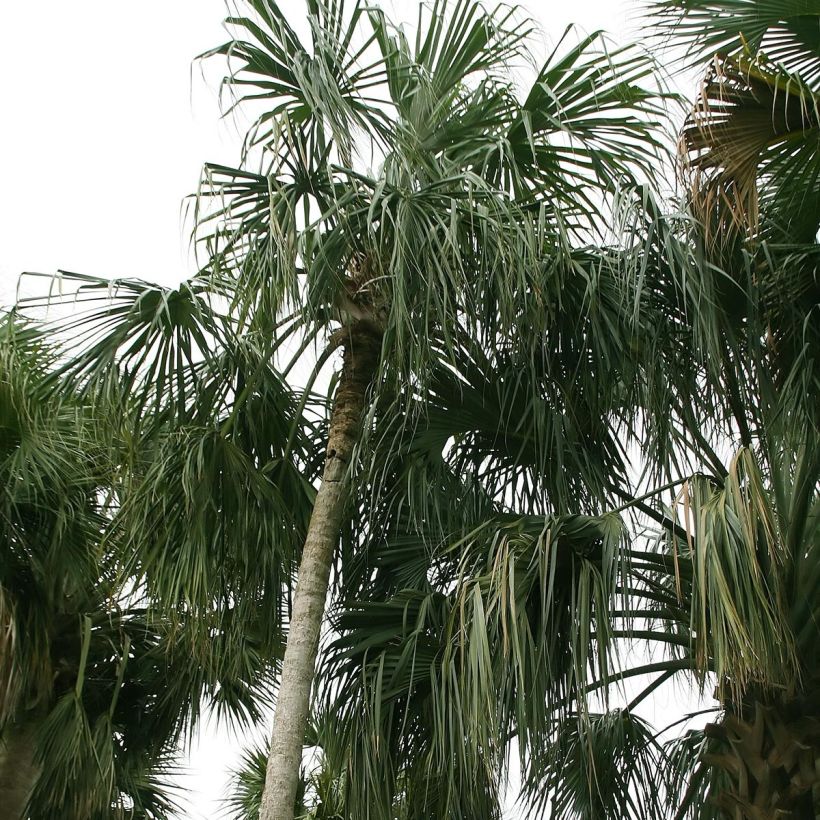

Plant habit
Flowering
Foliage
Botanical data
Sabal
mauritiiformis
Arecaceae
Palma Amarga, Palma de Vaca, Trinidad Palm
Central America
Other Sabal
Planting and care
This palm tree shows rather rapid growth, slower during its first 8 or 10 years, it prefers partial shade (or shade in hot climates) and requires warmth. Plant the Sabal mauritiiformis in the ground in the mildest coastal areas, where frost does not exceed -3/-4°C (26.6/24.8°F) for a short period. Plant it in well-drained, light, deep and fertile soil, even slightly chalky, but remaining moist in summer. It requires little maintenance except for pruning the oldest leaves close to the stem.
Container cultivation: choose a very large pot and use good horticultural soil. Apply fertilizer in spring. Watering should be reduced in winter but abundant in summer. Store your palm tree in a slightly heated greenhouse, with a slightly humid atmosphere.
Planting period
Intended location
Care
This item has not been reviewed yet - be the first to leave a review about it.
Evergreen shrubs
Haven't found what you were looking for?
Hardiness is the lowest winter temperature a plant can endure without suffering serious damage or even dying. However, hardiness is affected by location (a sheltered area, such as a patio), protection (winter cover) and soil type (hardiness is improved by well-drained soil).

Photo Sharing Terms & Conditions
In order to encourage gardeners to interact and share their experiences, Promesse de fleurs offers various media enabling content to be uploaded onto its Site - in particular via the ‘Photo sharing’ module.
The User agrees to refrain from:
- Posting any content that is illegal, prejudicial, insulting, racist, inciteful to hatred, revisionist, contrary to public decency, that infringes on privacy or on the privacy rights of third parties, in particular the publicity rights of persons and goods, intellectual property rights, or the right to privacy.
- Submitting content on behalf of a third party;
- Impersonate the identity of a third party and/or publish any personal information about a third party;
In general, the User undertakes to refrain from any unethical behaviour.
All Content (in particular text, comments, files, images, photos, videos, creative works, etc.), which may be subject to property or intellectual property rights, image or other private rights, shall remain the property of the User, subject to the limited rights granted by the terms of the licence granted by Promesse de fleurs as stated below. Users are at liberty to publish or not to publish such Content on the Site, notably via the ‘Photo Sharing’ facility, and accept that this Content shall be made public and freely accessible, notably on the Internet.
Users further acknowledge, undertake to have ,and guarantee that they hold all necessary rights and permissions to publish such material on the Site, in particular with regard to the legislation in force pertaining to any privacy, property, intellectual property, image, or contractual rights, or rights of any other nature. By publishing such Content on the Site, Users acknowledge accepting full liability as publishers of the Content within the meaning of the law, and grant Promesse de fleurs, free of charge, an inclusive, worldwide licence for the said Content for the entire duration of its publication, including all reproduction, representation, up/downloading, displaying, performing, transmission, and storage rights.
Users also grant permission for their name to be linked to the Content and accept that this link may not always be made available.
By engaging in posting material, Users consent to their Content becoming automatically accessible on the Internet, in particular on other sites and/or blogs and/or web pages of the Promesse de fleurs site, including in particular social pages and the Promesse de fleurs catalogue.
Users may secure the removal of entrusted content free of charge by issuing a simple request via our contact form.
The flowering period indicated on our website applies to countries and regions located in USDA zone 8 (France, the United Kingdom, Ireland, the Netherlands, etc.)
It will vary according to where you live:
- In zones 9 to 10 (Italy, Spain, Greece, etc.), flowering will occur about 2 to 4 weeks earlier.
- In zones 6 to 7 (Germany, Poland, Slovenia, and lower mountainous regions), flowering will be delayed by 2 to 3 weeks.
- In zone 5 (Central Europe, Scandinavia), blooming will be delayed by 3 to 5 weeks.
In temperate climates, pruning of spring-flowering shrubs (forsythia, spireas, etc.) should be done just after flowering.
Pruning of summer-flowering shrubs (Indian Lilac, Perovskia, etc.) can be done in winter or spring.
In cold regions as well as with frost-sensitive plants, avoid pruning too early when severe frosts may still occur.
The planting period indicated on our website applies to countries and regions located in USDA zone 8 (France, United Kingdom, Ireland, Netherlands).
It will vary according to where you live:
- In Mediterranean zones (Marseille, Madrid, Milan, etc.), autumn and winter are the best planting periods.
- In continental zones (Strasbourg, Munich, Vienna, etc.), delay planting by 2 to 3 weeks in spring and bring it forward by 2 to 4 weeks in autumn.
- In mountainous regions (the Alps, Pyrenees, Carpathians, etc.), it is best to plant in late spring (May-June) or late summer (August-September).
The harvesting period indicated on our website applies to countries and regions in USDA zone 8 (France, England, Ireland, the Netherlands).
In colder areas (Scandinavia, Poland, Austria...) fruit and vegetable harvests are likely to be delayed by 3-4 weeks.
In warmer areas (Italy, Spain, Greece, etc.), harvesting will probably take place earlier, depending on weather conditions.
The sowing periods indicated on our website apply to countries and regions within USDA Zone 8 (France, UK, Ireland, Netherlands).
In colder areas (Scandinavia, Poland, Austria...), delay any outdoor sowing by 3-4 weeks, or sow under glass.
In warmer climes (Italy, Spain, Greece, etc.), bring outdoor sowing forward by a few weeks.


































